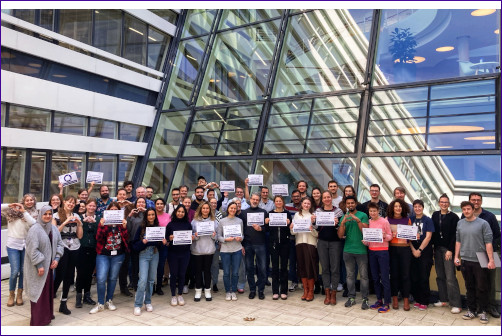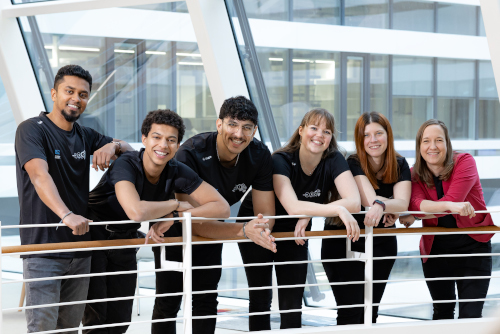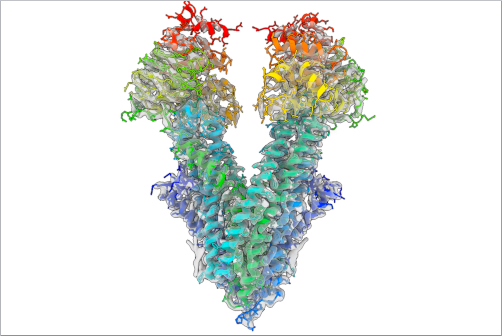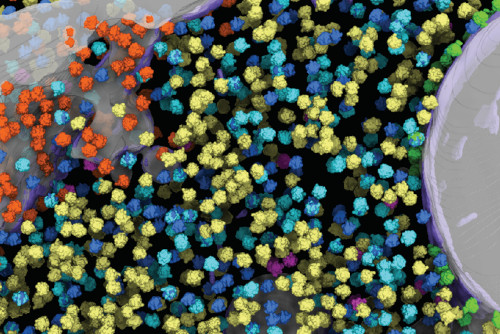The Helmholtz Training Course on Integrative Structural Biology
The Structural Biology Cross Programme Activity "Structural Biology" together with the Centre for Structural System Biology sponsored a training course about the methods and application used in integrative structural biology. The course, which took place from 22-26 October at CSSB in Hamburg, focused on sample preparation for biophysical studies, X-ray crystallography and cryo-electron microscopy. By combining lectures with hands-on practical training, we were able to illustrate the importance of using a combination of structural biology techniques to answer challenging biological questions," explains Michael Kolbe one of the course's organizers.
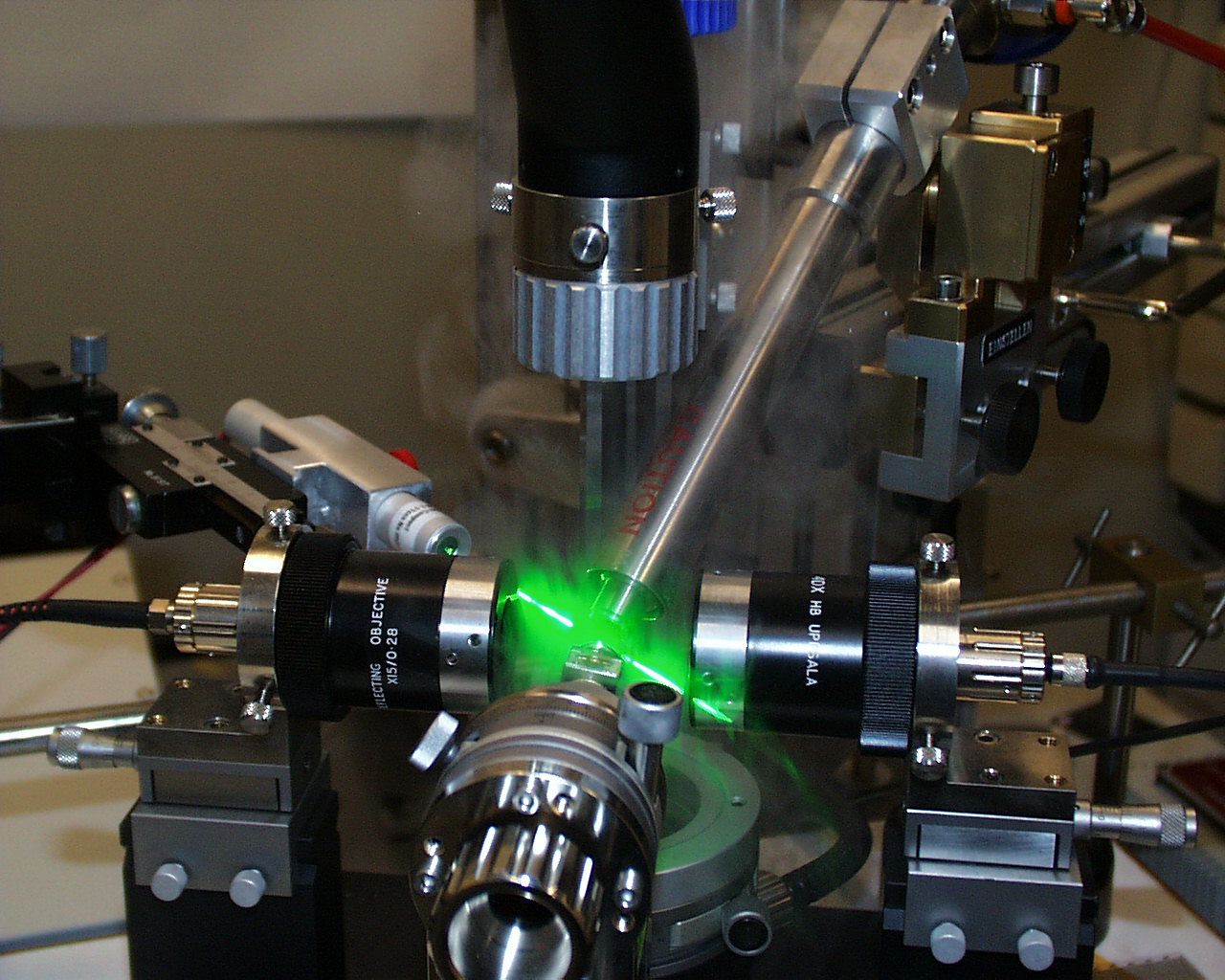
CSSB reached out to three of the participants to learn a little bit more about them and to find out what they learned during their five days in Hamburg. Here’s what they shared ...
Celeste Abreu
Home Country: Portugal
Institute: Department of Biochemistry, Faculty of Science, Charles University, Prague, Czech Republic
What is the current focus of your research? My research is focused on the elucidation of novel protein ligands for CD69, an early activation marker of human lymphocytes, and at the detailed mechanistic and structural understanding of CD69: a ligand complex formation.
What you enjoy most about course? I greatly enjoyed the practical courses and the lectures in the sense that a range of biological and biophysical techniques were covered in detail. Besides that, I enjoyed learning about the integration of different approaches to solve challenging questions.
What did you learn during the course that you will be able to apply to your own research? The course has presented me with detailed lectures about some biophysical techniques that I was not entirely acquainted with. In that sense, the course has broadened the overview of techniques and approaches I can employ to continue developing my research.
Was this your first time in Hamburg? What did you enjoy most about the city? Yes, it was. Despite not having much time to fully explore the city, I really appreciated the varying architectural styles of the city’s historical sites as well as the connection of the city with the Elbe River.
Tell us one interesting fact about yourself. I have played football competitively for the majority of the last 10 years, and I am currently representing a multicultural football club in Prague.
Alex Hempelmann
Home Country: Germany
Institute: Deutsches Krebsforschungszentrum (DKFZ), Heidelberg, Germany
What is the current focus of your research? Visualising the protein surface of the parasite Trypanosoma (causes African sleeping sickness) using structural high-resolution techniques.
What did you enjoy most about the course? Besides meeting new international colleagues, I really enjoyed the overview of several structural methods. I got very helpful input for my PhD here.
What did you learn during the course that you will be able to apply to your own research? I will apply what I learned about quality control in both protein purification, as well as refining electron density maps. I believe what I learned in the course will save me a lot of time in my project.
Was this your first time in Hamburg? What did you enjoy most about the city? I have been to Hamburg before. I enjoyed (again) the harbour and as well as the organised cruise on the river.
Tell us one interesting fact about yourself. In high school I tried to invent a glue to fix broken bones, even though I never had a broken bone.
Pandora Karakousi
Home Country: Greece
Institute: National Hellenic Research Foundation (NHRF) Institute of Biology, Medicinal Chemistry & Biotechnology (IBMCB)
Athens, Greece
What is the current focus of your research? I am working in Chrysina group at IBMCB-NHRF in the frame of a collaborative research project with Hatzinikolaou group, Department of Biology, University of Athens. We perform structural studies on the enzyme 6-phospho-β-glycosidase, in the free form and in complex with substrate analogues. This enzyme, is able to hydrolyze the glycosidic bond of a broad range of β-P-di-hexoses, isolated from the genome of the thermophilic bacterium Geobacillus sp. SP24, from a volcanic environment (Santorini, Aegean Sea, Greece). It is optimally active at 65° C retaining more than 80% of its activity to 70° C. These characteristics make this enzyme attractive to biotechnological approaches e.g. biofuels.
What you enjoy most about the Helmholtz Training Course on Integrative Structural Biology at CSSB? I am a young researcher that has only recently started working in the field of structural biology. All topics presented at the workshop were very interesting and will be valuable for the research work that I will perform in the future as a PhD student. I found most exciting the advanced method of cryo-EM tomography, as well as the sample preparation process for applying this technique. I also enjoyed the lecture on Integrative Modeling of Macromolecular Assemblies which was very impressive, showing a revolutionary approach in the research of large biological systems.
What did you learn during the course that you will be able to apply to your own research? My research work focuses on structural studies using X-ray protein crystallography. Therefore, all lectures on sample preparation, characterization and X-ray data collection were relevant and most useful to apply directly on my project. It was the first time that I was visiting a synchrotron radiation source and X-ray data collection was very useful. Most likely, we will be visiting PETRAIII to collect data for my protein.
Was this your first time in Hamburg? What did you enjoy most about the city? I had never visited Hamburg before. It is a very beautiful city, with fairy-tale buildings, especially in the city centre. I really enjoyed the boat trip with the rest of the workshop participants. I also had a chance to spend an extra day in Hamburg and went for a lovely morning walk from Altona to the Alster Lake by the river.
Tell us one interesting fact about yourself. I have just finished my MSc and I am about to start my PhD in Structural Biology in Chrysina group at NHRF. My driving force for working on proteins is that their 3D structure determination is like a puzzle; you know that you have all the pieces and the challenge is to put them together. I am also a judge and trainer of artistic/synchronized swimming and to my mind integrative structural biology reveals even the most complex symmetrical patterns of protein molecules, just like those adopted by swimmers.
